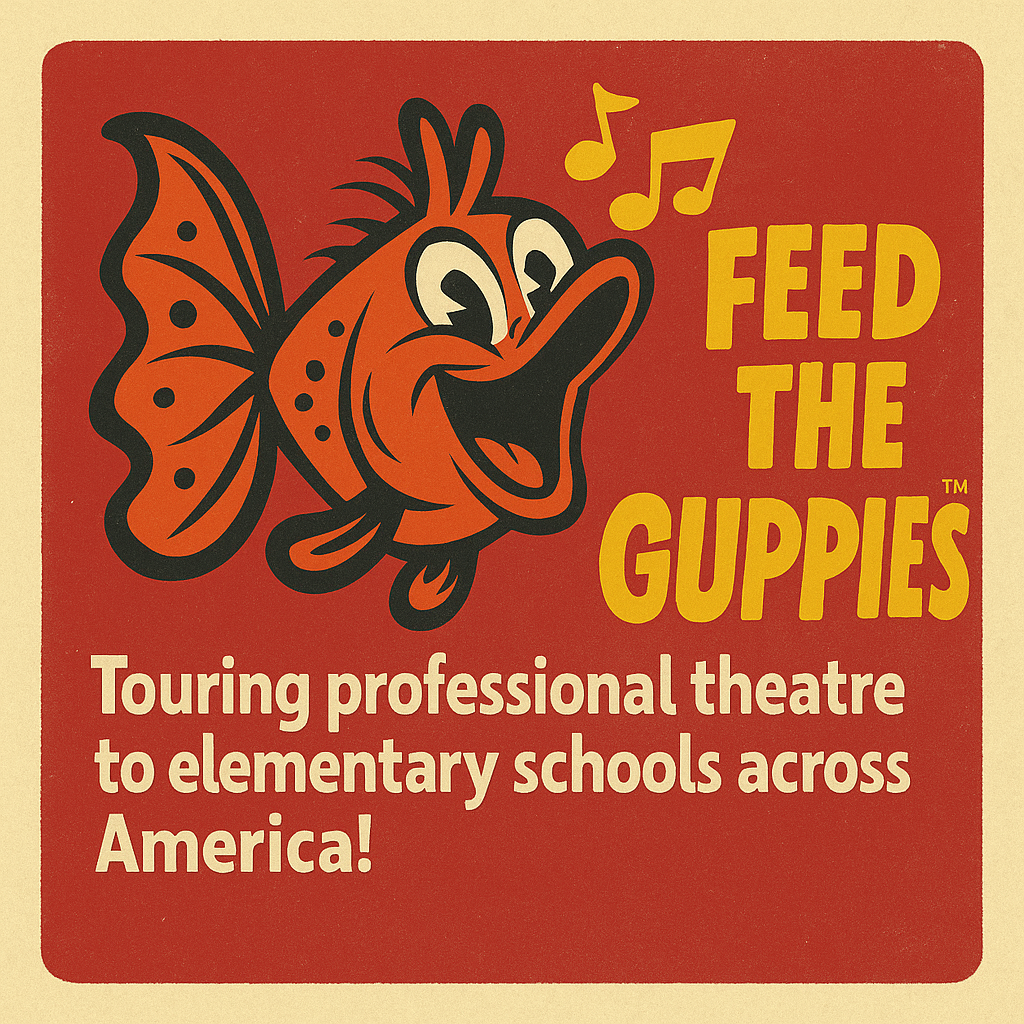A Non-Profit Organization

Igniting Imagination Through Performance
Our mission is simple: every child, regardless of geography, income, or background, deserves access to the magic of live theatre. We believe in the power of storytelling to inspire empathy, ignite imagination, and help kids feel seen, valued, and capable of greatness.
Across rural towns, working class cities, and underserved regions, thousands of children grow up never experiencing a live performance. Music programs vanish, theatre classes are cut, and stages go dark. For many of these kids, school is the safest place they know– and yet in the arts, which offer healing, joy, and hope, are out of reach. Your support allows us to walk into these classrooms and say, “theatre came to you”. With your help, we bring possibility, wonder, and creative belonging to the children who need it most.
Transforming Lives Through the Power of Storytelling
Founded by Emmy Award-winning actor, Timothy Busfield, Feed The Guppies, Inc. is a non-profit organization dedicated to bringing professional theatre, dance and music to students nationwide as part of each school’s annual curriculum. With a desire to grow the nation’s theatre audiences, nurture new playwrights, and develop young performers, Feed The Guppies brings high-quality performances and workshops to hundreds of thousands of K-12 students each year. With a diverse repertoire of live programs, such as plays, musicals, dance performances, concerts, and other media arts, Feed The Guppies insures a lasting impact on students, educators, and communities.

Enrichment Services Through Theatre

Feed The Guppies, Inc. begins with 50 minute performances of musical theatre in the schools. 10 to 12 performances per week, 36 weeks per year in 40 cities across the country. In addition to wildly entertaining productions, we offer workshops teaching playwriting, acting, and the general skills of performing individually and as a team.
Because theatre and film are so closely associated we also offer workshops on short form filmmaking to help teach students know how and where to film, edit, and launch their own stories.
Our performers are graduates recruited from Universities and Colleges across each state. We bridge the gap between college and the pros by serving young audiences. As part of our Guppies team, our performers will develop the professional skills of stamina, character development, consistency, and etiquette necessary for longevity.
Cultural Services that Engage and Enlighten
School Tours of Plays: Engaging and educational performances tailored for K-12 students, bringing stories to life while promoting literacy and creativity.
Family Plays for the Community: Entertaining and enriching productions for audiences of all ages, fostering social interaction and cultural enrichment.
Workshops and Classes: Interactive sessions and educational programs that develop basic skills in theatre, film, and multimedia production.
Multimedia Productions: Diverse options including short films, television series, web series, documentaries, and full-length feature films.
College Graduate Opportunities: Providing pathways for recent graduates to transition into the professional performing arts industry, offering training, support, and connections for long-term success.
Launching Talent, Building Trust in the Arts

Feed The Guppies, Inc. stands out in the performing arts landscape through its innovative approach to talent development and community building. By launching multiple theatre companies across the United States in its inaugural season, Feed The Guppies breaks the traditional mold by providing immediate financial support and a clear trajectory for recent graduates to transition into the professional realm. This unique model not only offers a platform for emerging artists to hone their skills but also fosters a collaborative environment where individuals can grow as part of a cohesive team. The emphasis on team dynamics and consistent performance opportunities sets Feed The Guppies apart, ensuring that talent is nurtured and developed in a supportive and engaging setting.
Moreover, Feed The Guppies’ commitment to long-term sustainability and community impact further distinguishes us from most other organizations in the industry. By starting out with touring plays to schools, and then building theatre venues for the whole family, and then finally venues for more adult audiences, our organization will provide long term growth reaching all audiences of all ages.
